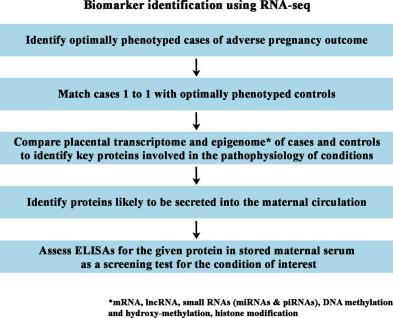Physical Address
304 North Cardinal St.
Dorchester Center, MA 02124
Adverse pregnancy outcomes are a major cause of the global burden of disease. Many of these outcomes, such as fetal growth restriction (FGR), preeclampsia, and placental abruption, are related to placental dysfunction. These complications can have profound effects on the mother and child. Preeclampsia is one of the leading causes of maternal death globally . Placental abruption is also associated with hemorrhage , which is another major cause of death. The mother may experience morbidity related to interventions performed in the fetal interest, such as induction of labor or cesarean section. Placental dysfunction can have multiple adverse effects on the fetus. It can lead to acute and chronic fetal hypoxia resulting in severe short-term complications, such as perinatal death or brain damage through asphyxia . It is also recognized that antepartum and intrapartum events are major determinants of long-term adverse neurodevelopmental outcome for the baby. Moreover, placental dysfunction and the management of certain conditions can lead directly to preterm birth , which is a major determinant of mortality and long-term morbidity in the offspring. There is a large body of evidence that a suboptimal intrauterine environment may predispose to a range of diseases in adult life, such as ischemic heart disease and stroke . Finally, placenta-related complications of pregnancy are a marker for later risk of cardiovascular disease in the mother , indicating possible targeted interventions to reduce cardiovascular risk to women experiencing these complications of pregnancy.
Despite these issues, screening and intervention to prevent placenta-related complications of pregnancy remain relatively unsophisticated. The current primary approach to screening for FGR in the United Kingdom and United States is serial measurement of the external size of the uterus (the “symphyseal-fundal height” [SFH]). This reflects the fact that more advanced approaches, such as universal ultrasonic fetal biometry, have not been shown to improve outcomes in meta-analyses of randomized controlled trials . This failure may, in turn, be explained by the fact that purely imaging-based methods do not perform well as a screening test. An ultrasonic estimated fetal weight (EFW) is a crude estimator of fetal size, commonly with errors of > 15% . Moreover, relative fetal smallness for gestational age (SGA) is a proxy for the condition of interest, namely, FGR.
We and others have proposed that measurement of circulating markers of placental function may result in improved clinical risk assessment and, consequently, their incorporation into future trials of screening and intervention may result in better clinical outcomes. The current model for approaching this ( Fig. 1 ) uses analysis of placental RNA to identify differentially expressed transcripts. Assays of the encoded proteins are then evaluated as a screening test. However, with the advent of the ability to analyze DNA and RNA derived from the placenta in the maternal circulation, there is now the potential for identification and assessment of placental biomarkers directly in the maternal blood without the need to study the placenta first. In the present review, we outline the major conditions which could be screened for, the existing evidence for the role of the placenta in their pathogenesis, and the existing evidence for the effectiveness of this approach in the diagnostic and screening pathways.

Preeclampsia is the manifestation of high blood pressure and multisystem disease (typically renal dysfunction resulting in proteinuria) in pregnancy. The disease can either occur de novo or be “superimposed” on preexisting hypertension and/or renal disease. Maternal risk factors for preeclampsia include nulliparity and obesity. Interestingly, the risk of the disease is lower in smokers. Preeclampsia is a major determinant of maternal and perinatal morbidity and mortality. The disease is commonly associated with FGR, but the two conditions can also exist in isolation. Management of the disease involves monitoring and treatment of its symptoms (e.g., antihypertensives) but effective treatment is, currently, only achieved by delivery.
FGR is a theoretical concept of failure of the fetus to achieve its genetically determined growth potential. The condition has no gold standard. Frequently the babies are small for gestational age, that is, < 10th percentile for sex and week of gestation. However, some cases of FGR may not be SGA and many cases of SGA are not FGR. Corroborative indicators of FGR include the presence of ultrasonic markers (such as abnormal uteroplacental blood flow indices or slowing down of fetal growth), acquired complications of pregnancy (including preeclampsia and preterm birth), and morbidity due to chronic fetal hypoxia. FGR is one of the major causes of stillbirth.
Placental abruption is premature separation of the placenta. Placental detachment from the uterine wall normally occurs following delivery of the baby. Abruption is partial or complete detachment when the baby is still in utero. As the placenta is the site of gaseous exchange, abruption leads to fetal asphyxia with the degree of asphyxia related to the proportion of the placenta which has detached. Typically, the separation extends to the edge of the placenta resulting in blood loss vaginally. The abruption can also be “concealed,” that is, the area of detachment is entirely within the placental perimeter and the condition is not associated with vaginal bleeding. The process of abruption can lead to a maternal coagulopathy and disseminated intravascular coagulation. Abruption is a recognized cause of maternal death and accounts for about 10% of stillbirths.
Become a Clinical Tree membership for Full access and enjoy Unlimited articles
If you are a member. Log in here